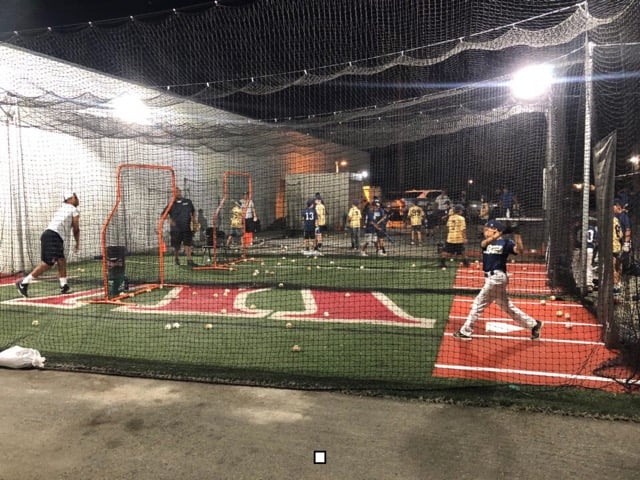Batting cage turf is uniform, unobtrusive, and always ready – this makes it one of the most popular surface materials for batting cage practice for baseball teams and organizations around the country.
Artificial grass has been showing up in sporting arenas all over the world, and the benefits it has for athletic competitions are well known.
However, this versatile, multipurpose ground covering can also give players a leg up on their practice sessions. In addition to mimicking the look and feel of natural grass, synthetic turf provides the following benefits when it is used in batting cages.

Increase Practice Availability
For ideal practice conditions, outdoor batting cages require a solid roof and walls to prevent muddy playing surfaces. Yet, many still have mesh or chain link barriers. Even with solid walls, rainwater still manages to seep into the practice area, and this can significantly cut down on the amount of time that the space can be used for practice. Artificial turf has special drainage systems in place that enable a batting cage to be used immediately after a storm has passed.

Improve Safety and Performance
Over time, natural grass takes a major pounding when it is used in batting cages. Hits from high-velocity balls and digging from cleats can all create divots that pose a tripping hazard for players. Artificial grass is more resistant to heavy wear and tear, and players will benefit from the low-impact padding that can be added to the liner so that the risk of injury is reduced for anyone using the batting cage. It is also important to note that using artificial turf reduces the risk of allergies and insect bites that can hinder a player’s performance at the next big game.
Reduce Maintenance Time and Costs
Natural grass in a batting cage may look pretty, but it requires significant time and money to keep it in top condition. The need to mow, fertilize and reseed cuts into practice time and is a major budgetary expense. It is also often necessary to move the cage every time it is mowed, which can alter the practice space and cause delays for players. With artificial turf, every one of these problems is eliminated. On average, synthetic grass can last up to ten years in ideal conditions. This means that batting cages will need minimal maintenance for up to a decade, and any initial cost will pay off in reduce maintenance expenses over the lifetime of the surface.
Demonstrate Environmental Awareness
Baseball players are known for loving the outdoors as well as their country, and many are advocates for creating an eco-friendly playing field. When artificial grass is used in a batting cage, it makes a strong statement about an organization’s commitment to protecting the natural environment. With artificial grass, harsh chemicals are not necessary for fertilization and pest control, which benefits the players’ health as well as the environment. When it has reached the end of its life span, the batting cage turf can then be hauled away and repurposed into new grass so that no materials ever go to waste.
In a batting cage, the turf is one of the most critical components for practice. Not only do players need a reliable surface to maintain their stance, they also need to know that they will never miss out on their necessary practice time. Synthetic turf is virtually maintenance-free, cost-effective and provides a consistent surface that protects players from injuries so that they can continue to develop the skills they need to hit that home run.
Tags:
Turf for SportsJul 25, 2016 3:43:56 AM


